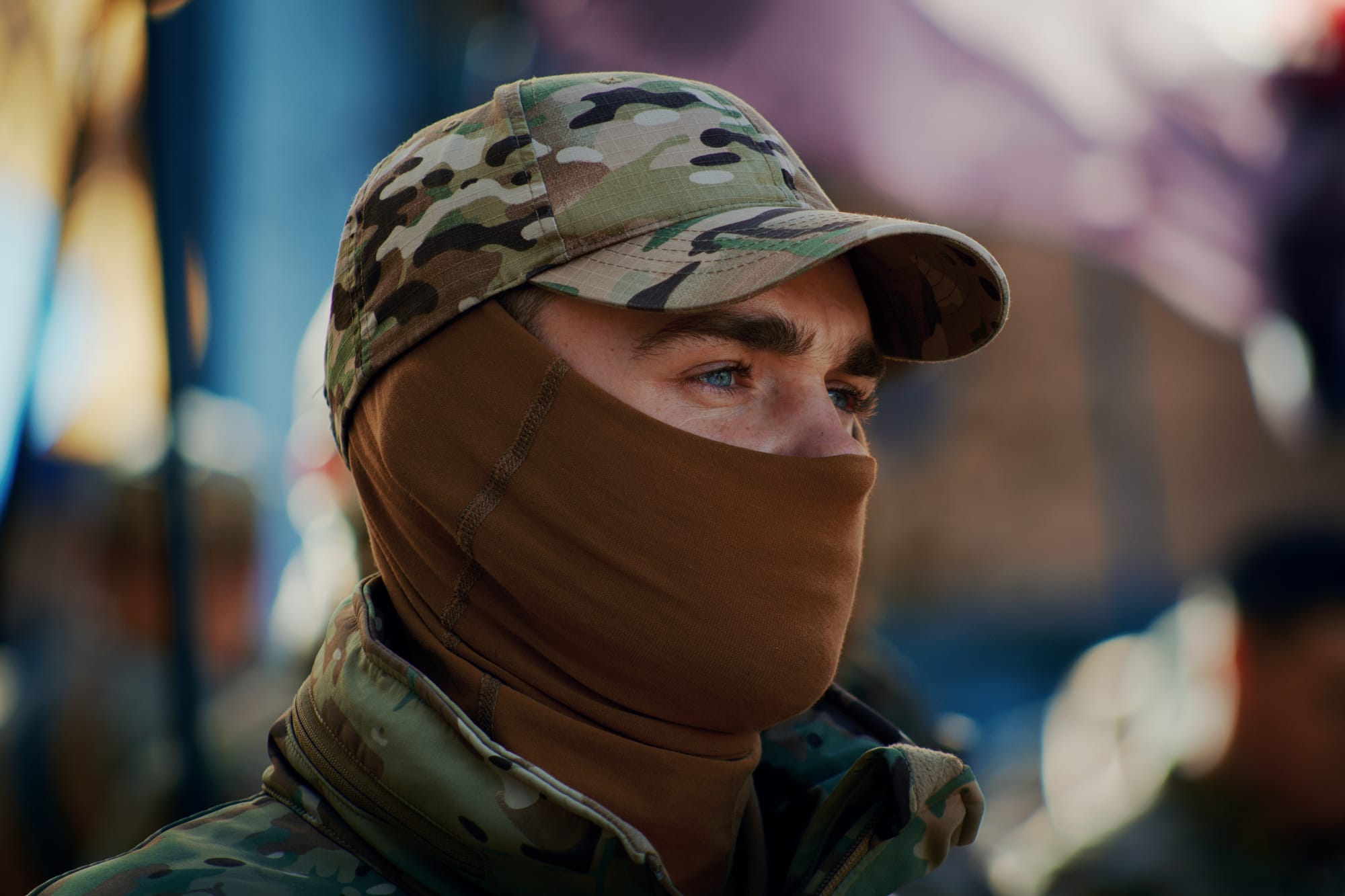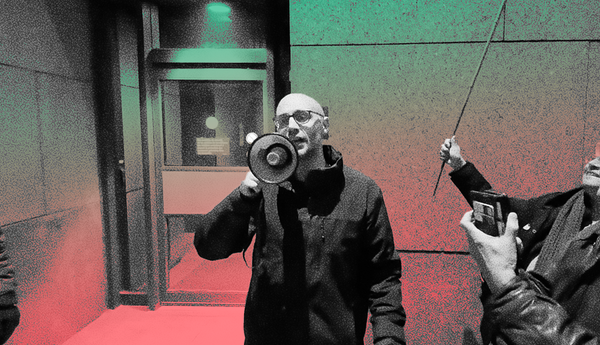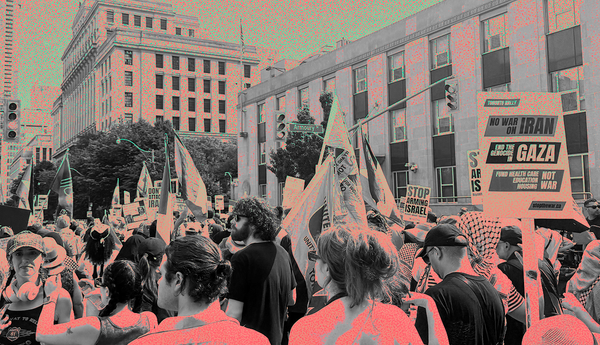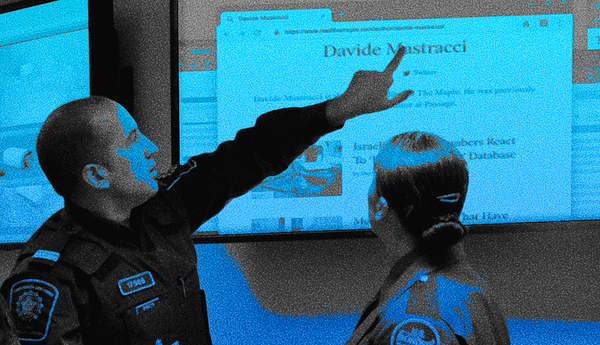Canada’s Department of National Defence (DND) says it will maintain its stated policy of not providing military support to Ukraine’s neo-Nazi led Azov Brigade, despite reports this week that the United States has lifted a ban on weapons transfers to the far-right military unit.
“Our position remains that we are not – nor will we – be providing support to Azov and affiliated entities,” DND spokesperson Kened Sadiku wrote in an email to The Maple on Tuesday, echoing the ministry’s previous statements about the military unit.
On Monday, the Washington Post reported that the Biden administration had lifted a six-year-old ban on arms transfers to Azov after the U.S. State Department conducted what it described as a “thorough review” of the unit. The review was reportedly conducted under a law that ostensibly prevents American military aid from ending up in the hands of foreign fighters credibly found to have committed “gross” human rights violations.
The State Department officials were not quoted by the Post as remarking on Azov’s ideology or long-term political aspirations, with their comments limited to addressing allegations of human rights abuses that have dogged the far-right unit’s various iterations for years. The officials claimed they had found “no evidence” of such violations.
As a result of the ban being lifted, Azov will now have the same access to American military aid as any other Ukrainian unit, according to the Post. It is unclear when the ban was actually lifted, and if U.S. arms may already be in Azov fighters’ hands.
Azov was originally founded as a “Battalion” by neo-Nazi gang members during the onset of Ukraine’s war with pro-Russia separatists in the country’s east in 2014, and was integrated into Ukraine’s National Guard the same year, when it was renamed “Azov Regiment.” The unit was expanded as a brigade in February 2023.
During Russia’s invasion of Ukraine, Azov became well-known for its ultimately unsuccessful stand against Russian forces at the Azovstal steel plant, where hundreds of its fighters were taken captive.
Extensive research and reporting has pointed to Azov members’ continued use of neo-Nazi insignia, and the unit’s ongoing ties to far-right political leaders, in particular Azov’s first commander and National Corps party leader, Andriy Biletsky. The unit itself is linked to the broader far-right “Azov Movement.”
Despite the change in U.S. policy, the Canadian government appears to be sticking to its stated position of refusing to give military aid to Azov, which DND has consistently referred to as an extremist formation throughout its various rebrands.
In January, The Maple obtained emails through an access to information request that showed DND’s directorate of NATO policy said Azov continued to be far-right “fanatics” despite their integration into the country’s national guard, contradicting Azov’s spokespeople and other defenders who regularly claim it has been de-radicalized.
Copied text in the March 2022 correspondence stated:
“It’s true that Azov was brought into the NGU [National Guard of Ukraine], but we don’t train them because they are fanatics, and we don’t share their values … It’s true that the Azov has dogged us as an issue for years, but we should definitely not hide from the fact that we train the NGU because of a small minority in their ranks.”
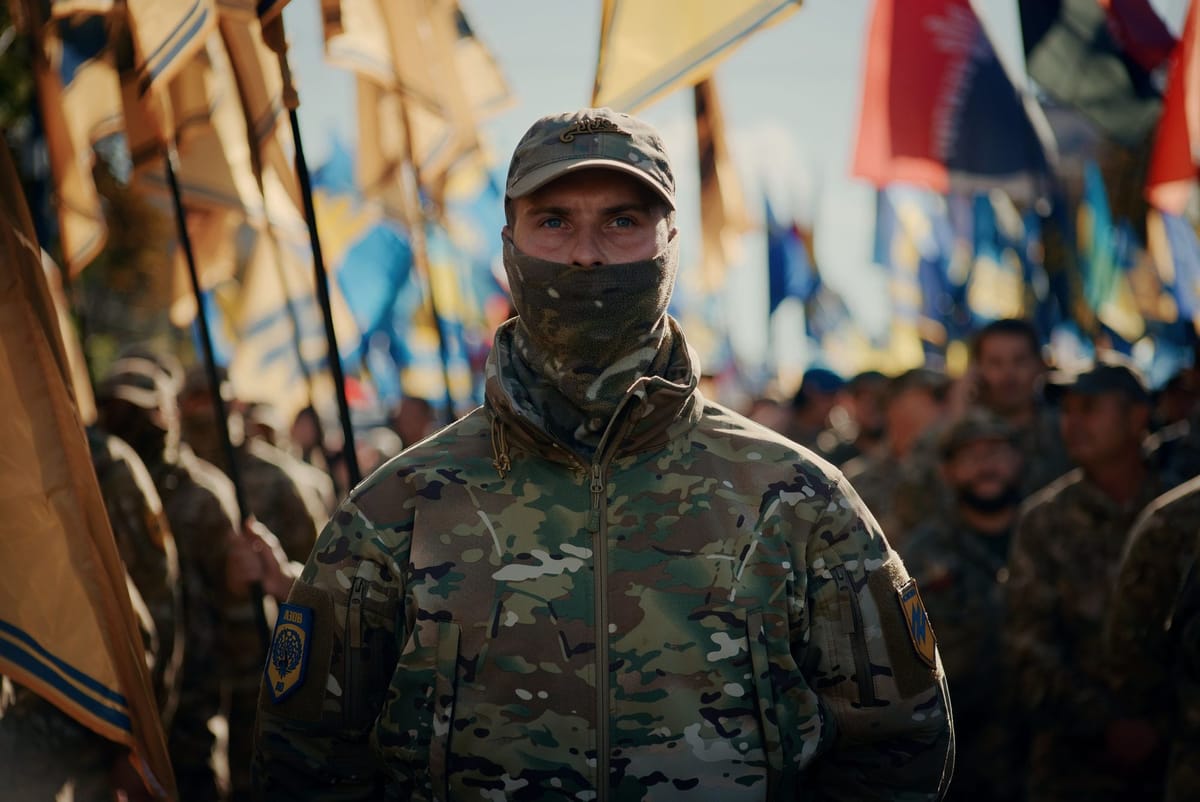
DND’s email to The Maple this week noted that since Russia launched its invasion, Canada’s “donations of [military] aid are not provided to the National Guard of Ukraine, an organization of the Ministry of Interior of Ukraine, to whom Azov reports.”
It is not clear if DND’s statement also applies to the 3rd Separate Assault Brigade, which was formed as part of the Ukrainian Armed Forces last year and is commanded by Azov veterans — including Biletsky — known for holding white supremacist views.
DND did not respond to a request for clarification by the time of publication. This story will be updated if the ministry provides a response.
Ivan Katchanovski, a professor specializing in Ukrainian politics at the University of Ottawa, told The Maple that both the Azov Brigade and the 3rd Separate Assault Brigade are “basically part of the same Azov Movement, which is led by [Biletsky’s] neo-Nazi party.”
There is no evidence, he said, that any Western country has banned military aid from going to the 3rd Separate Assault Brigade. He added that DND’s statements about not giving support to the Azov Brigade should also be taken with a large grain of salt.
In 2021, the Ottawa Citizen’s David Pugliese found that Canadian officers who were reported to have met with and been briefed by Azov members in 2018 did not denounce the group, but instead feared that journalists would expose the meeting.
In April 2022, Radio Canada and CTV News reported on further evidence showing that the Canadian Armed Forces had trained members of Ukraine’s military who were reported to be members of far-right groups, including Azov, as recently as 2020.
Photographs posted to social media last year appeared to show Azov recruits training with Canadian-made rifles. It is not clear, however, how those rifles ended up in Azov’s hands, and the weapons may have been provided by a different foreign military that uses the same model.
Katchanovski also cast doubt on the U.S. State Department’s claim that Azov has not committed human rights abuses. The National Corps party, Azov’s political wing, has been involved in attacks against Roma people and other violent actions.
In 2018, a U.S. State Department report noted that a Ukrainian group established with support from the National Corps party “attacked and destroyed a Romani camp in Kyiv after its residents failed to respond to their ultimatum to leave the area within 24 hours.”
The U.S. State Department, Katchanovski said, has tried to deflect concerns about its recent move by misleadingly suggesting that Azov Brigade is a newly created formation with no relation to its predecessor units.
“This is quite unbelievable,” Katchanovski said. “This is open support and endorsement by the Biden administration of open neo-Nazis in Ukraine.”
Getting The Ban Lifted
The Biden administration’s lifting of the arms transfer ban followed lobbying efforts by Azov members.
In 2022, independent researcher Moss Robeson reported on an Azov delegation’s tour and outreach efforts in the U.S. to push for the arms transfer ban to be lifted.
In May this year, Azov members visited the United Kingdom to advocate for Azov soldiers held in Russian captivity.
During the visit, the Azov members were hosted by British dignitaries and parliamentarians, including former British prime minister Boris Johnson, who explicitly dismissed concerns about Azov as “Putin’s propaganda.”
“They are heroes, they are people who are fighting for their country, for their homes, and they are doing it successfully,” Azov’s official Twitter account quoted Johnson as saying. During the event, Johnson was photographed with a copy of an Azov member’s memoir, featuring on the cover another fighter known for having a tattoo depicting Adolf Hitler, according to Robeson.
Other members of the Azov delegation were reported by Robeson to have been pictured wearing far-right political patches, previously photographed alongside other fighters making Nazi salutes and as having other assorted far-right contacts and political associations.
Continued Far-Right Links
Those who defend the Azov Brigade, including some Western news outlets and opinion writers, claim that focusing on the group’s neo-Nazi origins lends credence to Russia’s suggestion that its invasion of Ukraine was necessary because the country was overrun with fascists and needed to be “de-Nazified.”
But abundant and readily available evidence points to the continued far-right extremism of Azov’s leaders and at least some of its soldiers.
Writing for The Nation last year, Ukrainian-born journalist Lev Golinkin noted that Western media extensively documented Azov members’ far-right beliefs well after the unit’s integration into Ukraine’s National Guard in November 2014, when it was supposedly reconstituted and de-radicalized.
As well, Golinkin noted, several more recently appointed commanders and leaders were members of Azov going back to its founding year, when it was universally recognized as being a neo-Nazi formation. Other commanders have continued to work closely with Biletsky, and at least one has been photographed wearing a t-shirt promoting a white supremacist political cause.
Biletsky himself has been quoted as saying that his country’s mission is to “lead the white races of the world in a final crusade ... against Semite-led Untermenschen (subhumans]).”
In 2016, Azov’s official Twitter account posted now-deleted images of one of its platoons posing with a flag bearing a modified Nazi “death’s head” symbol.
Well after 2014, Golinkin noted, investigators pointed to Azov’s role in meeting with, recruiting and training members of foreign neo-Nazi groups.
In 2018, Azov affiliates were reported to have gathered in Germany with far-right counterparts from across Europe, including Greece’s Golden Dawn, Italy’s neo-fascist CasaPound and Germany’s openly neo-Nazi National Democratic Party.
The same year, following the arrest of members of an American white supremacist gang called the “Rise Above Movement” (RAM), an FBI agent noted Azov had participated in “training and radicalizing” such groups. A RAM member had been filmed participating in a cage fight at an Azov-linked club and unofficial networking hub in Kyiv.
In 2020, Ukrainian researcher Oleksiy Kuzmenko wrote in an article published by the Atlantic Council that Azov remained “joined at the hip” to the National Corps party, which he noted had invited the German neo-Nazi group “Dritte Weg” (Third Way) to march alongside Ukrainian veterans in Kyiv in 2019.
In a German blog post (translated into English by The Maple using an online tool), Dritte Weg said “the material brought by our national revolutionary party found many interested parties among the Ukrainian nationalists.”
Kuzmenko also cited a 2018 interview between an Azov movement spokesperson and Sweden’s “Nordic Resistance Movement.” In a transcript of that interview, the Azov spokesperson was asked about the unit’s views on Jewish people, who were referred to by the interviewer with an antisemitic slur. The spokesperson said that “they harm the interests of Europeans.”
“If any minority remains loyal to Ukraine they can stay,” the Azov spokesperson continued. “However, having had a minority of Jews involved within our nationalist political sphere has damaged our reputation.”
At the time his report for the Atlantic Council was published, Kuzmenko noted, “Azov’s Kyiv recruitment center and military academy share a location with the offices of the National Corps.”
In his article for The Nation, Golinkin noted that Denys Prokopenko, a more recently appointed Azov commander who received a Hero of Ukraine award in 2022, previously belonged to a far-right football gang called the “White Boys Club,” which, according to Reporting Radicalism, frequently uses hate symbols and other emblems that make reference to the Waffen SS.
Following the onset of Russia’s invasion in February 2022, The Intercept reported that the death of a French volunteer in Ukraine presented “the first clear evidence that there are at least some far-right extremists among the foreign fighters who have flocked there.” The volunteer had been photographed wearing a patch bearing the logo of the “Misanthropic Division,” Azov’s “overtly fascist volunteer wing,” according to The Intercept.
In 2018, The Guardian reported on findings by the U.K.-based anti-fascist group Hope Not Hate, which stated that the Misanthropic Division was working with representatives of British far-right groups, including the proscribed terror organization “National Action,” to recruit activists to travel to Ukraine.
Alex Cosh is the news editor of The Maple.


